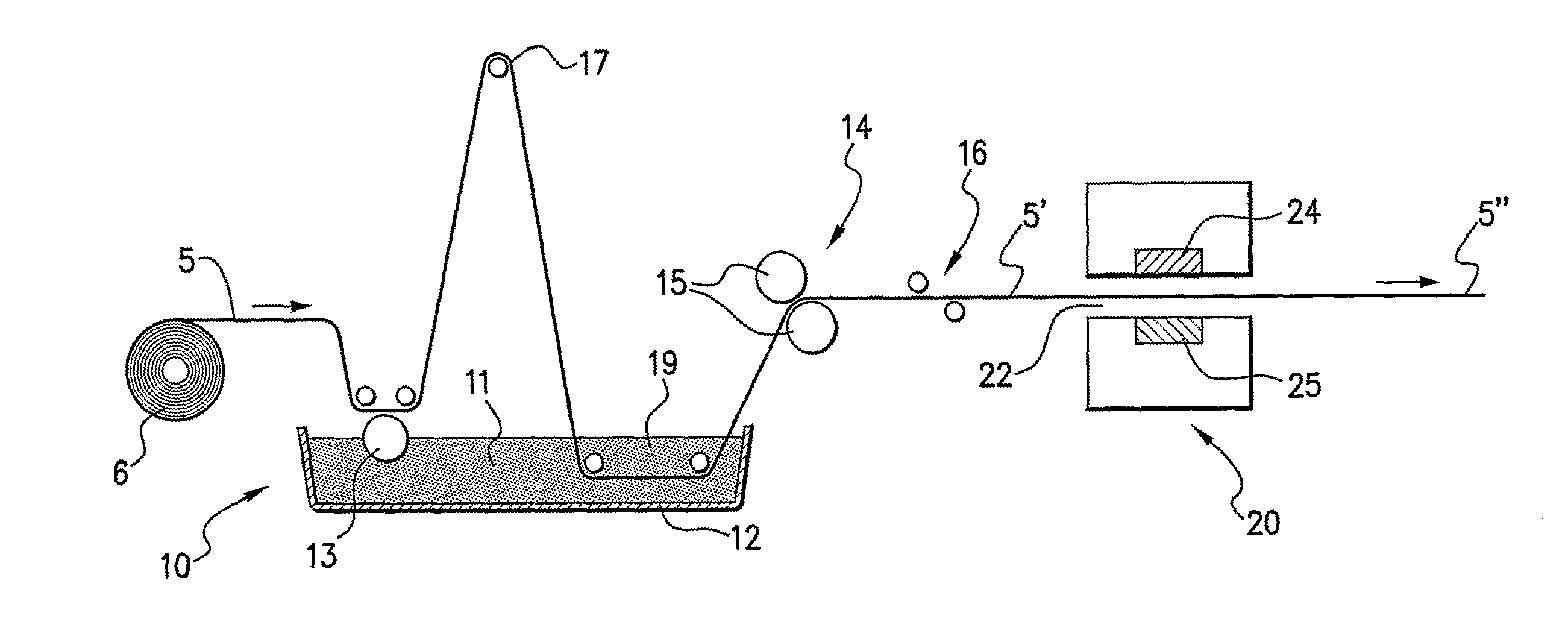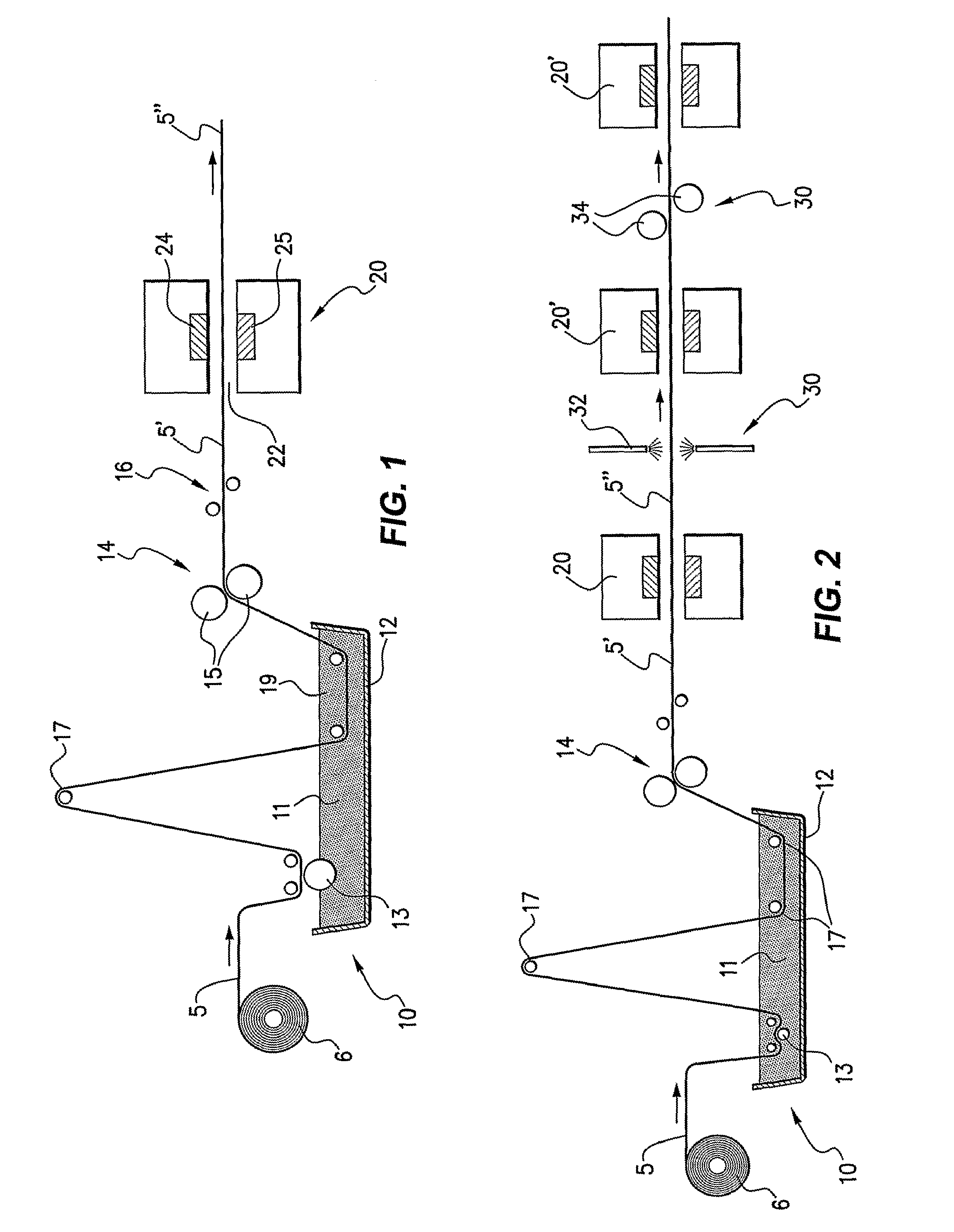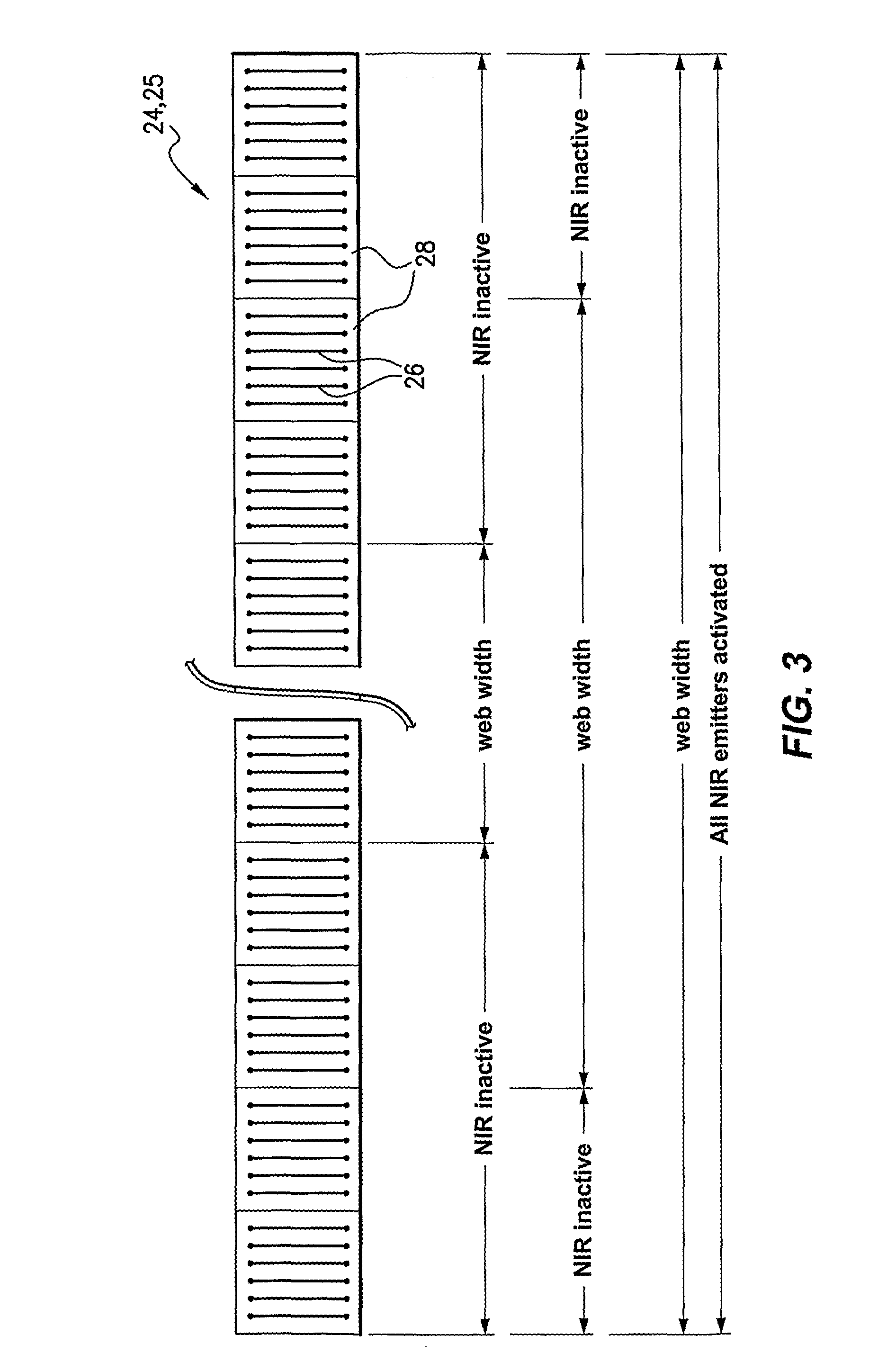Pre-preg and laminate manufacture
a technology of pre-preg and laminate, applied in the direction of pre-treated surfaces, railway components, textiles and paper, etc., can solve the problems of significant occupational health and safety issues, economic disadvantages of impregnated papers, and inevitable health problems, and achieve the effect of higher drying and curing rates
- Summary
- Abstract
- Description
- Claims
- Application Information
AI Technical Summary
Benefits of technology
Problems solved by technology
Method used
Image
Examples
examples
[0049]A web of white décor paper, of basis weight 80 gsm was impregnated with melamine formaldehyde resin in aqueous solvent, and then partially dried and partially cured by being passed twice between 4.4 kw NIR irradiators at 60 m / min. With the NIR irradiators operating at 80% power, the first pass exit temperature was measured as 75° C. and the final exit temperature about 102° C. The end weight (paper, resin and water) was observed to be 165 gsm including about 11% volatiles. Total residence time between the NIR irradiators was 0.5 seconds.
[0050]In a second trial, the same grade of MF impregnated white décor paper was passed once between similar NIR irradiators at a much slower speed, 37.5 m / min. The exit temperature was measured as about 96° C. and the end weight (paper, resin and water) 140 gsm. Volatiles comprised about 8%. Residence time between the NIR irradiators was 0.8 seconds.
[0051]In both trials, no significant skinning or dusting was observed.
[0052]These trials demonst...
PUM
| Property | Measurement | Unit |
|---|---|---|
| time | aaaaa | aaaaa |
| time | aaaaa | aaaaa |
| speed | aaaaa | aaaaa |
Abstract
Description
Claims
Application Information
 Login to View More
Login to View More - R&D
- Intellectual Property
- Life Sciences
- Materials
- Tech Scout
- Unparalleled Data Quality
- Higher Quality Content
- 60% Fewer Hallucinations
Browse by: Latest US Patents, China's latest patents, Technical Efficacy Thesaurus, Application Domain, Technology Topic, Popular Technical Reports.
© 2025 PatSnap. All rights reserved.Legal|Privacy policy|Modern Slavery Act Transparency Statement|Sitemap|About US| Contact US: help@patsnap.com



